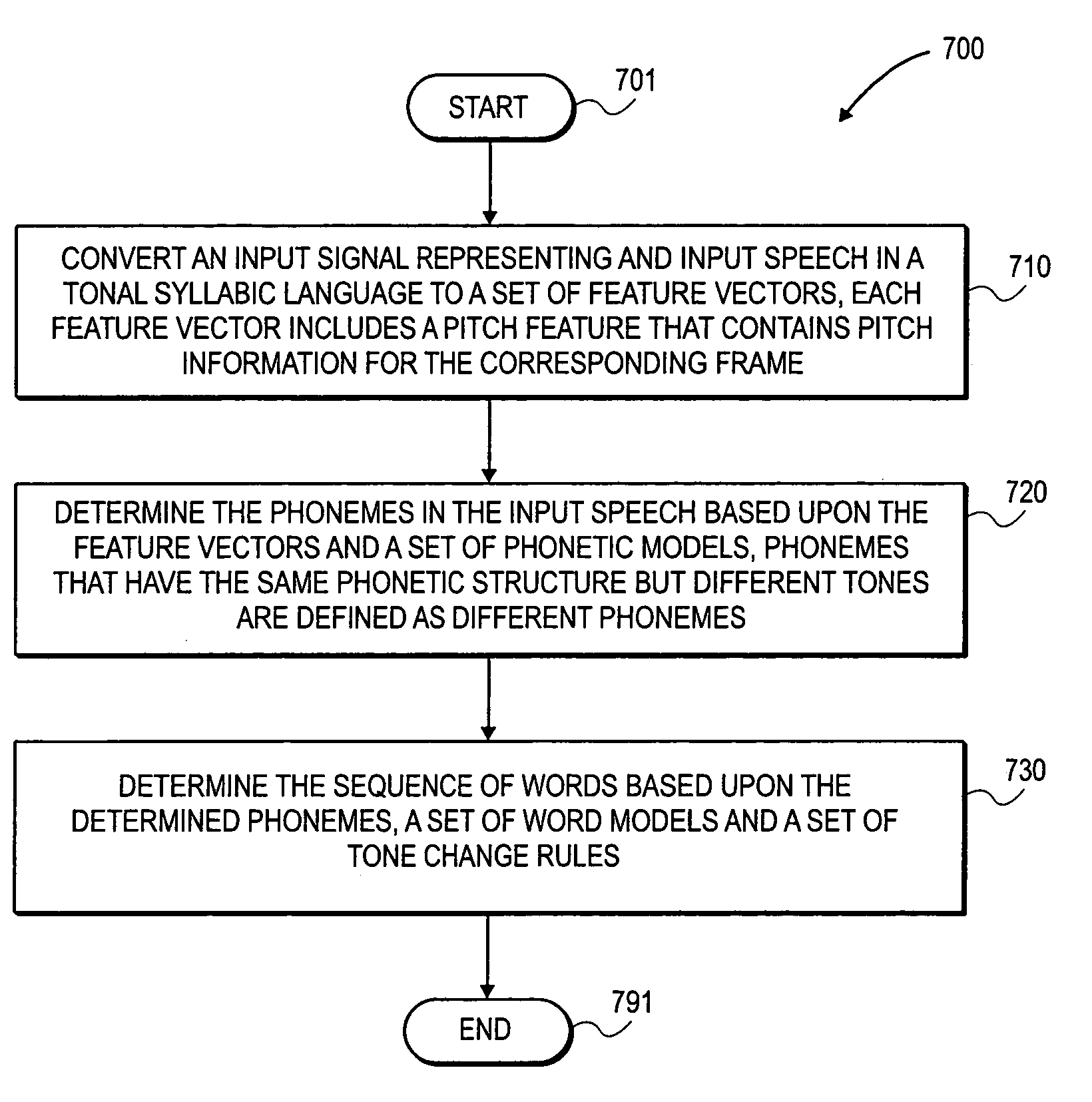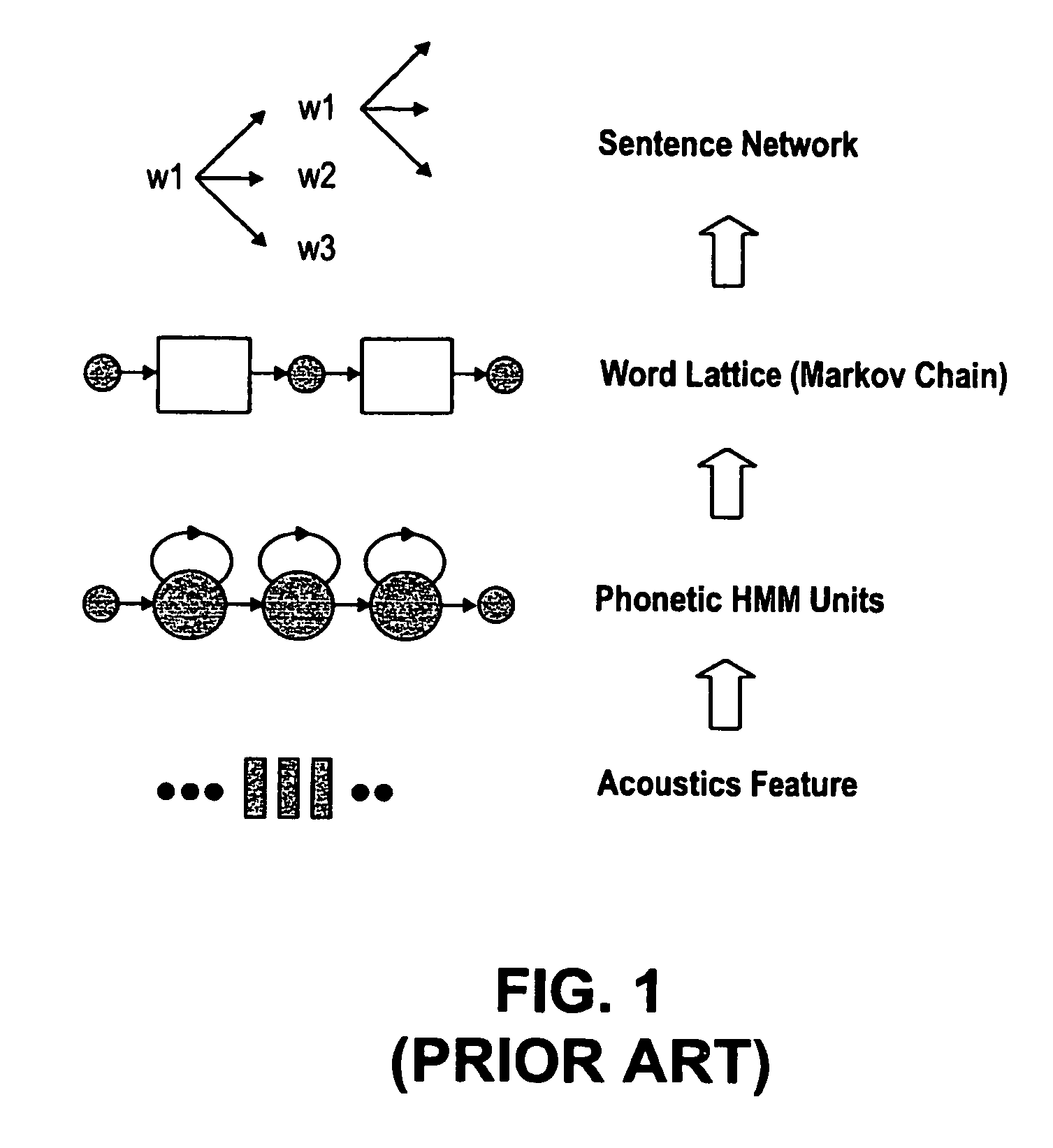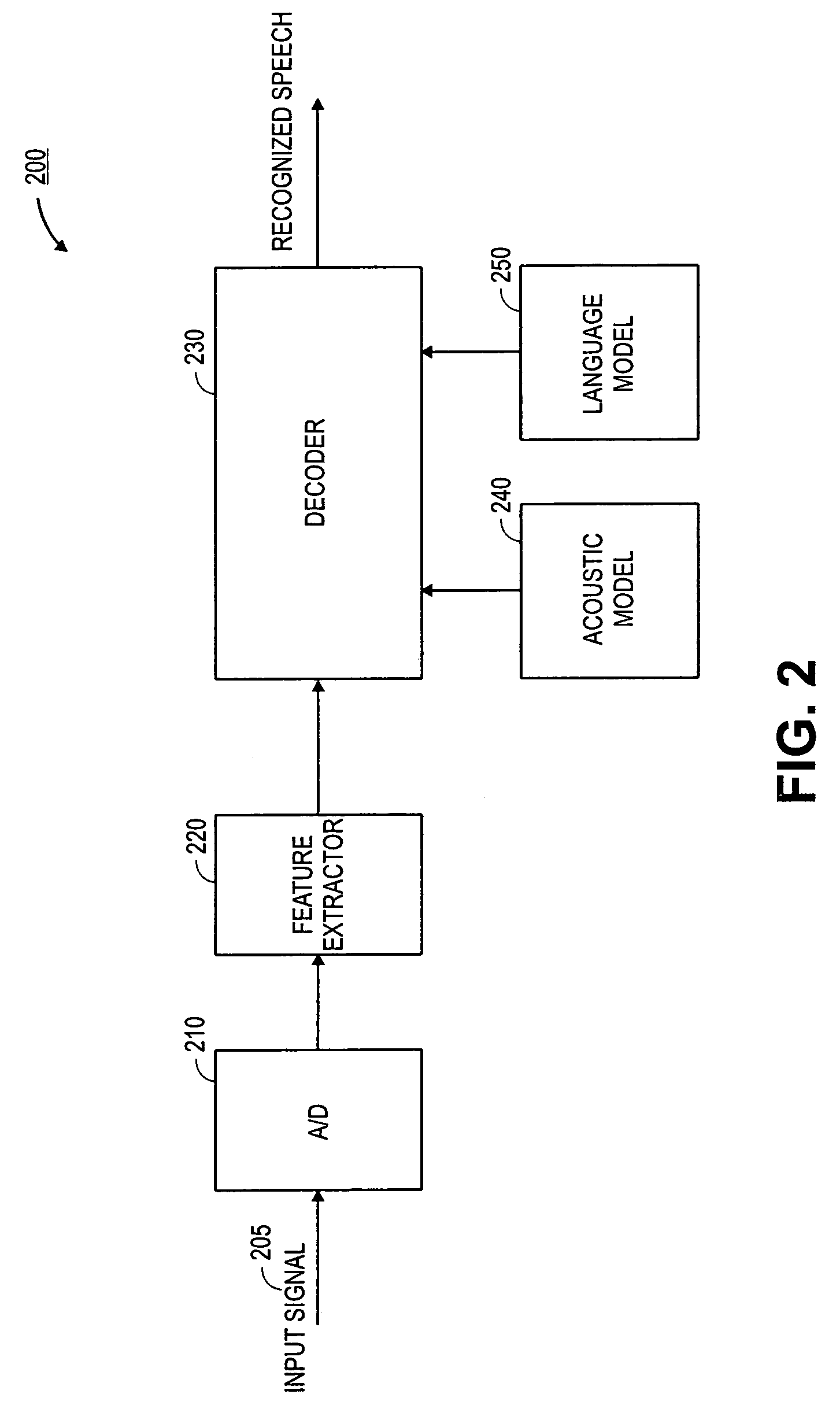Method, apparatus, and system for bottom-up tone integration to Chinese continuous speech recognition system
- Summary
- Abstract
- Description
- Claims
- Application Information
AI Technical Summary
Benefits of technology
Problems solved by technology
Method used
Image
Examples
Embodiment Construction
[0015]In the following detailed description numerous specific details are set forth in order to provide a thorough understanding of the present invention. However, it will be appreciated by one skilled in the art that the present invention may be understood and practiced without these specific details.
[0016]In the discussion below, the teachings of the present invention are utilized to implement a method, apparatus, system, and machine-readable medium for providing tone integration in bottom-up architecture to Chinese continuous speech recognition systems. According to the teachings of the present invention, the tone knowledge and influence is modeled at various levels in a bottom-up recognition structure. At the acoustic level, pitch is treated as a continuous acoustic variable. In one embodiment, to make pitch estimation from a frame easy to be modeled by Gaussian mixture distribution, two voiced sections are connected by an exponential decay function plus a random noise and frequ...
PUM
 Login to View More
Login to View More Abstract
Description
Claims
Application Information
 Login to View More
Login to View More - R&D
- Intellectual Property
- Life Sciences
- Materials
- Tech Scout
- Unparalleled Data Quality
- Higher Quality Content
- 60% Fewer Hallucinations
Browse by: Latest US Patents, China's latest patents, Technical Efficacy Thesaurus, Application Domain, Technology Topic, Popular Technical Reports.
© 2025 PatSnap. All rights reserved.Legal|Privacy policy|Modern Slavery Act Transparency Statement|Sitemap|About US| Contact US: help@patsnap.com



